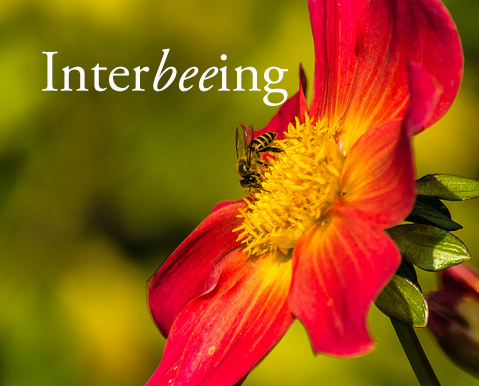savor
Mindful Eating, Mindful Life
savorthebook.com
Read More About
Mindful Eating
Mindful Living
Weight Loss
Exercise
Meditation
Inter-bee-ing

The annual arrival of spring and summer vegetation never ceases to amaze. There’s nothing quite like the sweet scent of wildflowers wafting through the air, or the satisfaction in the first bite of garden-grown produce. When we eat mindfully, we take the time to thank all the elements that made our food possible—the sun, the wind, the rain—and all the hard-workers, including farmers, chefs, and grocers. Yet whether we think of it briefly or just take it for granted, one key element in this whole equation often seems to go unnoticed—the persistent work of the honeybee.
Honeybees are the epitome of interbeing, both in their practice and in their product. Their hive structure operates on pure teamwork. The queen produces and regulates the hive’s population; the honeybees communicate through “dance” when they find a spot full of flowers, and buzz from plant to plant, transferring pollen for new growth and gathering nectar to make honey—nourishing the hive throughout the winter when there is no food. Bees cannot exist without flowers, flowers cannot exist without bees—and from those flowers come fruits and veggies. From apples to walnuts, Honeybees and wild bees are the most important pollinators of much of the produce we eat, contributing to roughly one-third of all crops worldwide. But honeybee colonies are dying at alarming rates. Since 2007 roughly 30% of colonies have died every winter in the US alone, while just last winter Canada lost 29% and Europe 20%. Colony Collapse Disorder (CCD) is the official term for dying colonies, in which bees abandon their hives over the winter and eventually perish. Scientists believe a combination of factors are making the bees sick, including pesticide use, invasive parasitic mites, an inadequate food supply, and a virus that targets their immune system. Additionally, a recent study from Harvard School of Public Health found that two widely used neonicotinoids—a class of insecticide—appear to significantly harm honeybee colonies over the winter, particularly during colder winters. Neonicotinoids are unique because they have active ingredients that can move into the pollen and nectar of flowering plants.
Findings like these are beginning to lead to new regulatory control of their commercial use, but it’s just the beginning. In the case of bees, it’s time for all of us to practice interbeing. By diversifying our farms and urban landscapes, planting native flowering plants in unused spaces, and finding alternatives to herbicides and insecticides, even small actions on our part can lead to significant change, as more people around the world become aware of what can be done to save this ally. Share this with your family, friends and colleagues—no doubt the bees will show their gratitude, continuing to fill our landscapes with beautiful flowers, and our plates with healthy food.
Original Photo: Kumaravel
SAVOR: Mindful Eating, Mindful Life. Copyright © 2026 by Thich Nhat Hanh and Lilian Cheung. All Rights Reserved. Please review our terms of use
Website design
Mary Pomerantz Advertising




